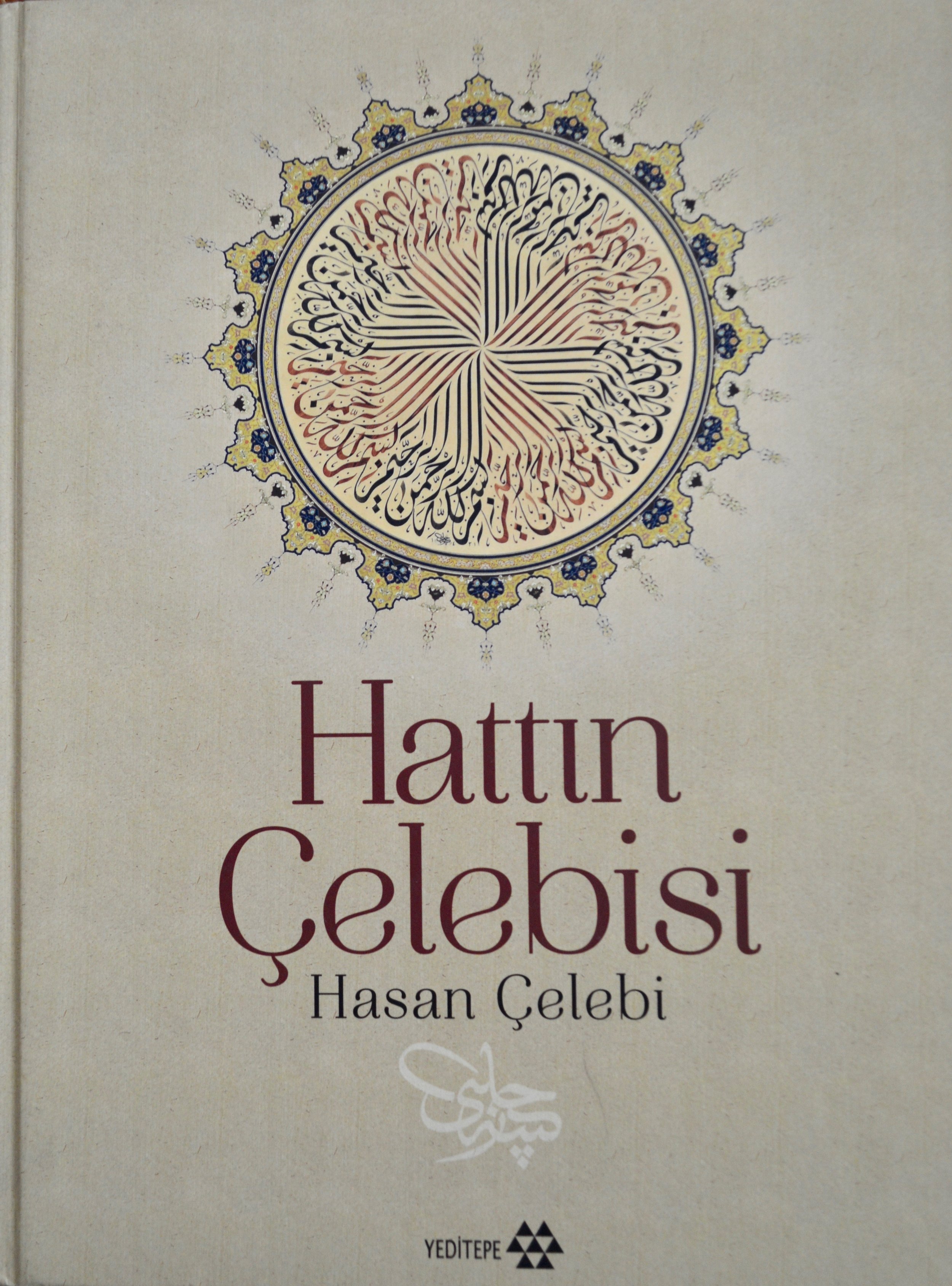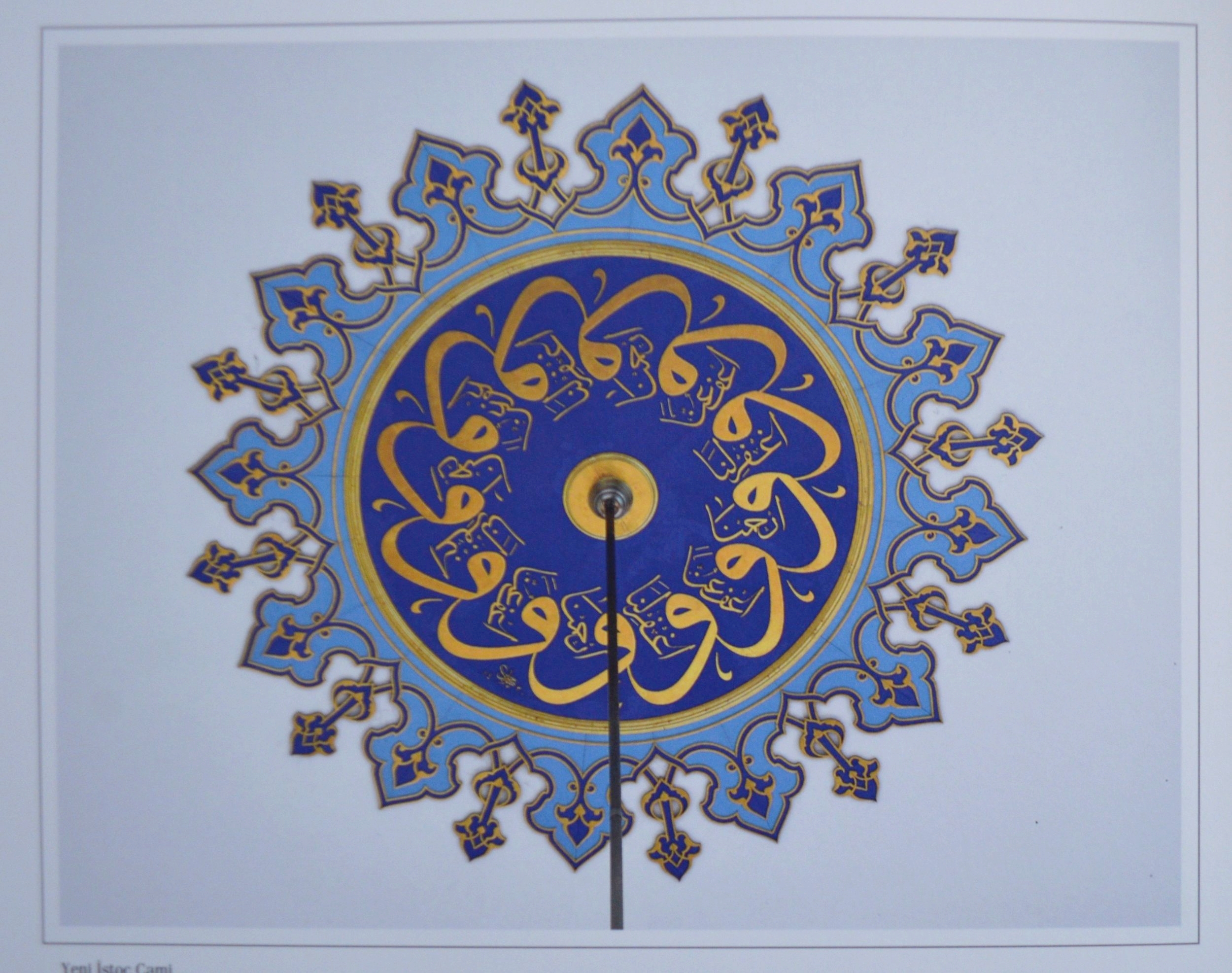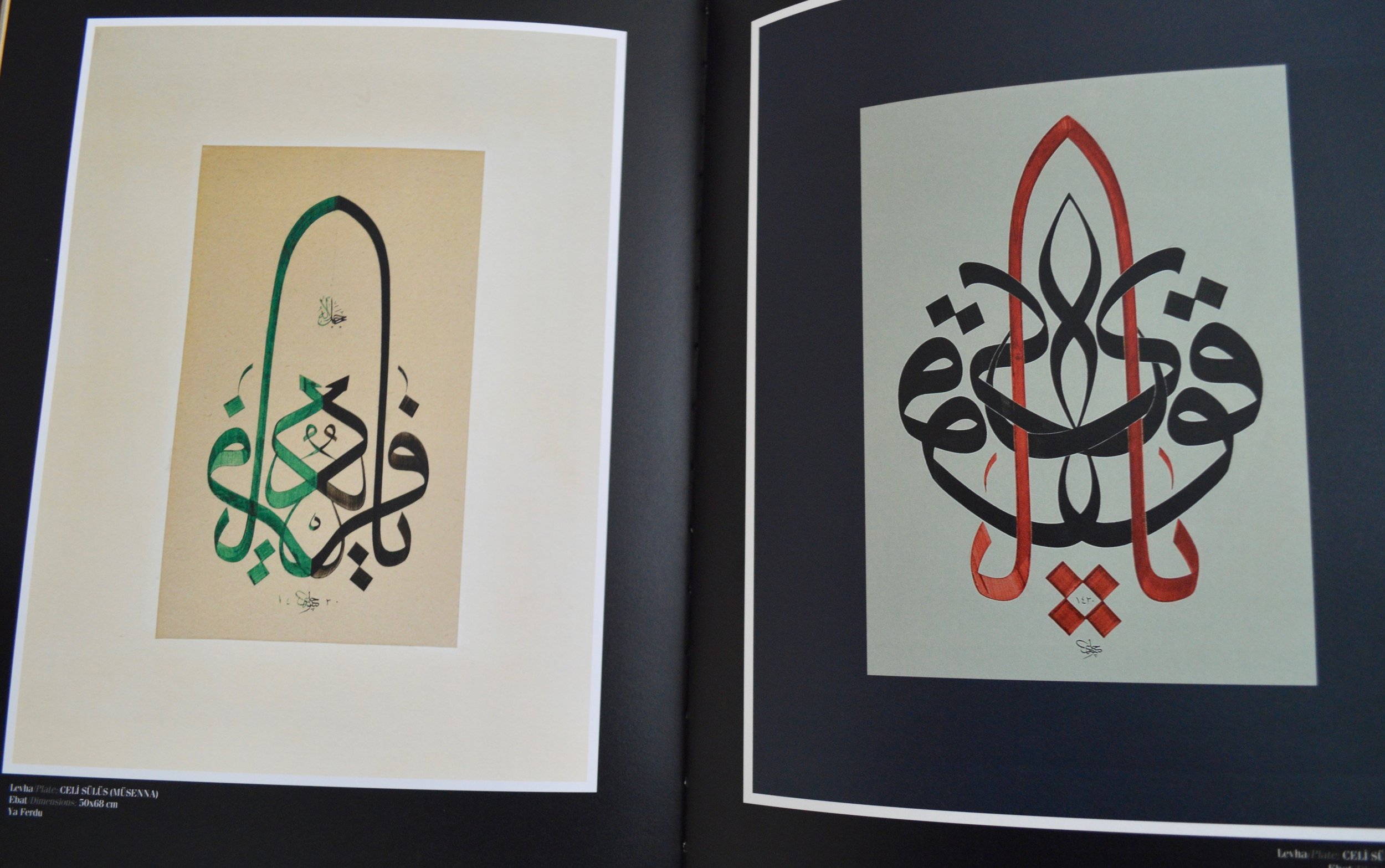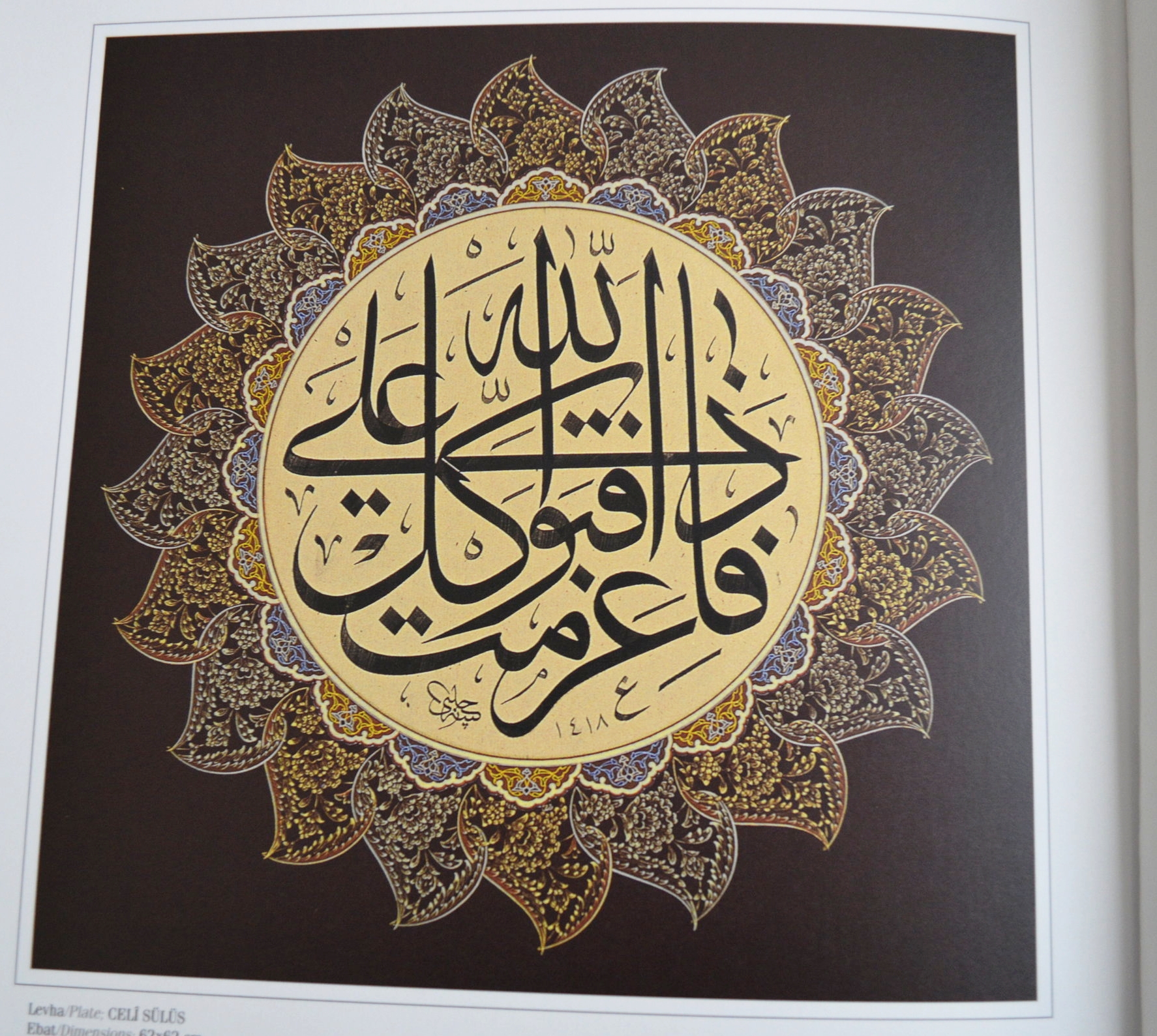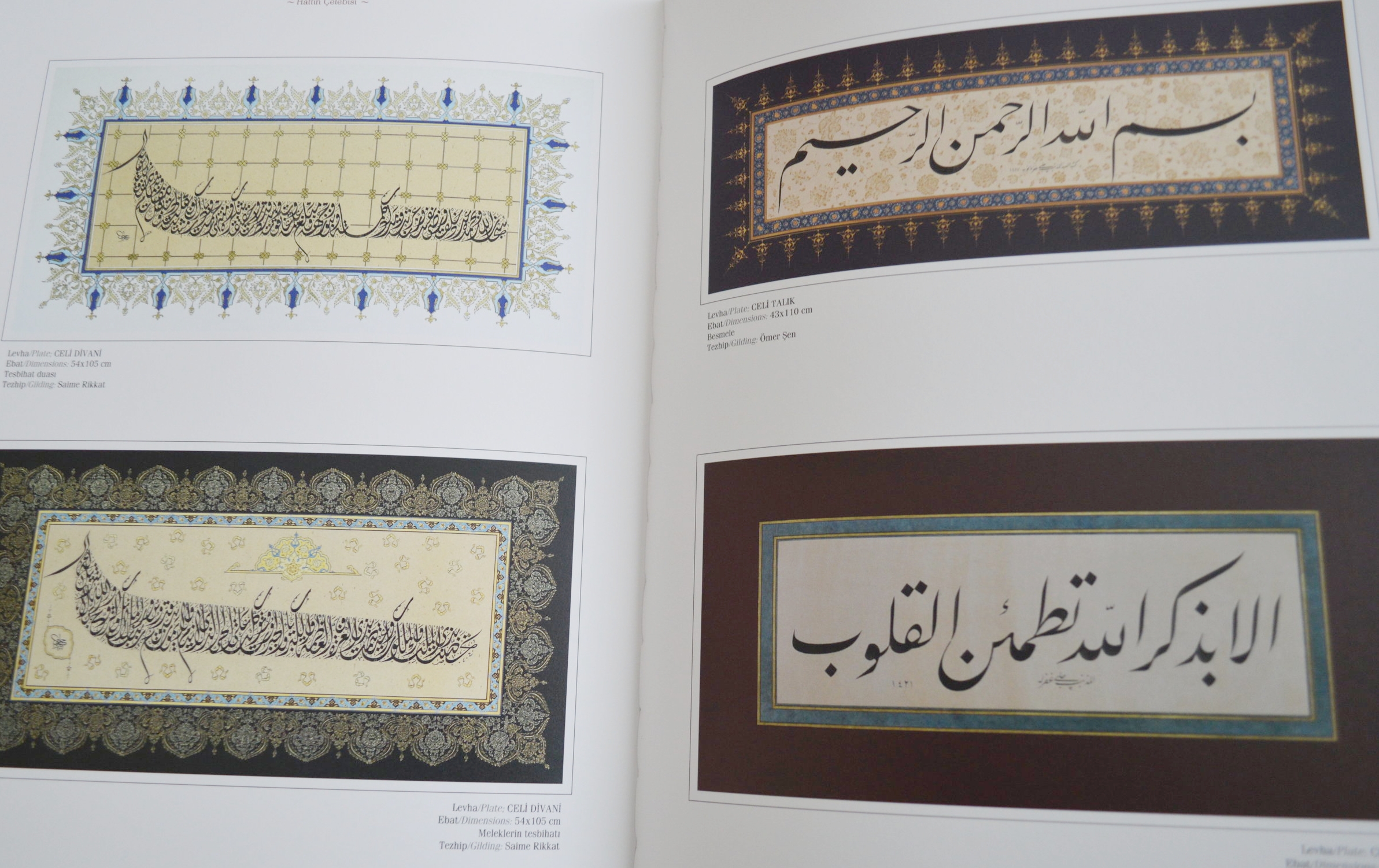As students of calligraphy, we strive to learn the tools and techniques of the art, but equally important are the people, our teachers, who preserve and carry this tradition in every generation. One such person who played a major role in the development and revival of the tradition of Arabic calligraphy in our time is undoubtedly Turkish grand master Hasan Çelebi.
To learn more about his life and works, I recently got a book celebrating Çelebi’s 50th year of art called Hattin Çelebisi.
The book is adorned with some of his finest works in several different scripts. A must read for anyone who is interested learning more about Çelebi.
Hasan Çelebi is by far the most distinguished representative of the art of Islamic Calligraphy in modern times. A student of the last representative of Ottoman school of calligraphy, Hamid Aytaç, he is our current link to the tradition of Arabic calligraphy. A venerated teacher who has been teaching this art since 1976, he has produced many notable and successful calligraphers in their own right, including Mohamed Zakariya, Davut Bektaş, Ayten Tiryaki, Ayman Hassan, Gulnaz Mahboob and Muhammad Hobe. His work adorns mosques all over the world, including Medina, Kuwait, Germany and South Africa.
Courtesy of muslimheritage.com
If you don’t want to read the full book, or even if you do, I’ve listed below the six things I found most interesting about Hasan Çelebi.
1. Hasan Çelebi was born in 1937 in the Inci village of the Oltu province of Erzurum, Turkey. Like many villages during that time, there were no schools or teachers. He learned to read and write by looking at newspapers.
2. He memorized the Quran.
3. He was a muezzin (caller to prayer) and Imam (leader in mosque) in several mosques in Turkey.
4. He was a student of Hamid Aytaç. However, in the beginning, Hamid sent Celebi to his student, Halim Özyazici because of his busy schedule. But, his time with Halim was short-lived, he died of a tragic accident after just four months of working with Çelebi. After the accident, Çelebi returned to Hamid, a relationship that lasted 18 years until Hamid’s death in 1982.
5. He spent two years writing his first lesson (“Rabbi Yassir”) with Hamid. It is mentioned that Hamid was a very reserved person and seldomly gave verbal feedbacks to his students. And due to his teacher’s silence, he felt that he didn’t have the necessary talent to advance and therefore decided to end his lessons. But when he expressed his decision to his teacher, Hamid was very surprised and he finally gave Çelebi his second lesson.
6. Çelebi received his Ijazah (diploma) in Thuluth and Naskh scripts after six years of studying with Hamid. But Hamid did something unusual, he signed his Ijazah in Turkish instead of Arabic, as it’s done traditionally. He also received another Ijazah in Ta’liq and Riq’a from Turkish master Kemal Batanay.
His surname Çelebi, literally means gentleman in Turkish and his students say he is exactly that and much more. Although, I have never met him in person, I did have the opportunity to interview a few of his students. As Gulnaz Mahboob, one his students, said,” Hasan Çelebi hoca (teacher) taught adeb (etiquette) in the complete sense of the word; love, respect and humility towards the letters, which extended to people, young and old, regardless of gender. He was extremely generous with his time and the knowledge he shared. His patience was/is paramount!”
Hasan Çelebi’s contribution to this art is innumerous and profound. He is truly a living legend and I am honored to be part of this beautiful tradition.
Reference:
Hattin Çelebisi, Yeditepe Publishing House, 2017
Some images from the book:
